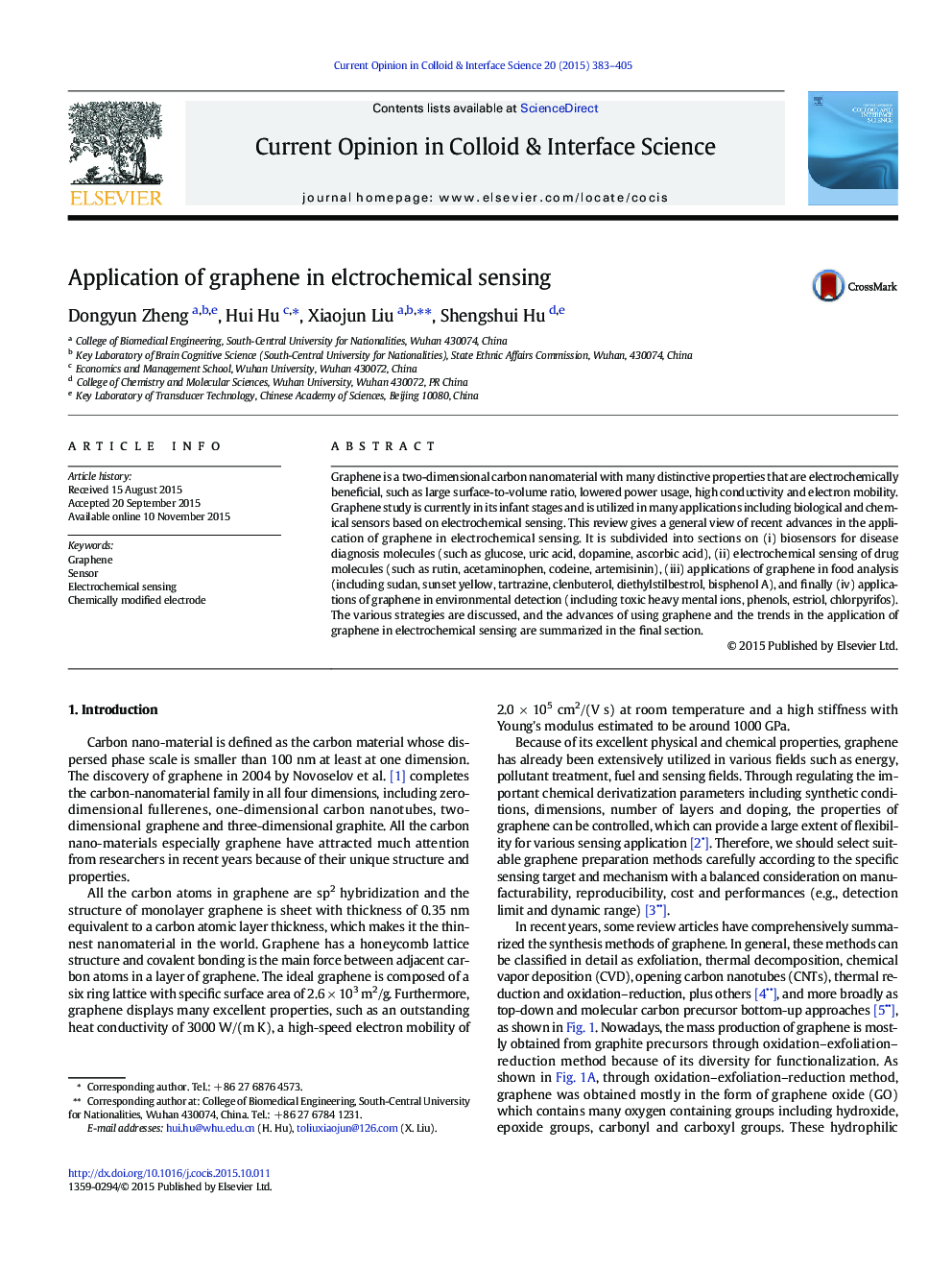| Article ID | Journal | Published Year | Pages | File Type |
|---|---|---|---|---|
| 6985035 | Current Opinion in Colloid & Interface Science | 2015 | 23 Pages |
Abstract
Graphene is a two-dimensional carbon nanomaterial with many distinctive properties that are electrochemically beneficial, such as large surface-to-volume ratio, lowered power usage, high conductivity and electron mobility. Graphene study is currently in its infant stages and is utilized in many applications including biological and chemical sensors based on electrochemical sensing. This review gives a general view of recent advances in the application of graphene in electrochemical sensing. It is subdivided into sections on (i) biosensors for disease diagnosis molecules (such as glucose, uric acid, dopamine, ascorbic acid), (ii) electrochemical sensing of drug molecules (such as rutin, acetaminophen, codeine, artemisinin), (iii) applications of graphene in food analysis (including sudan, sunset yellow, tartrazine, clenbuterol, diethylstilbestrol, bisphenol A), and finally (iv) applications of graphene in environmental detection (including toxic heavy mental ions, phenols, estriol, chlorpyrifos). The various strategies are discussed, and the advances of using graphene and the trends in the application of graphene in electrochemical sensing are summarized in the final section.
Related Topics
Physical Sciences and Engineering
Chemical Engineering
Colloid and Surface Chemistry
Authors
Dongyun Zheng, Hui Hu, Xiaojun Liu, Shengshui Hu,
